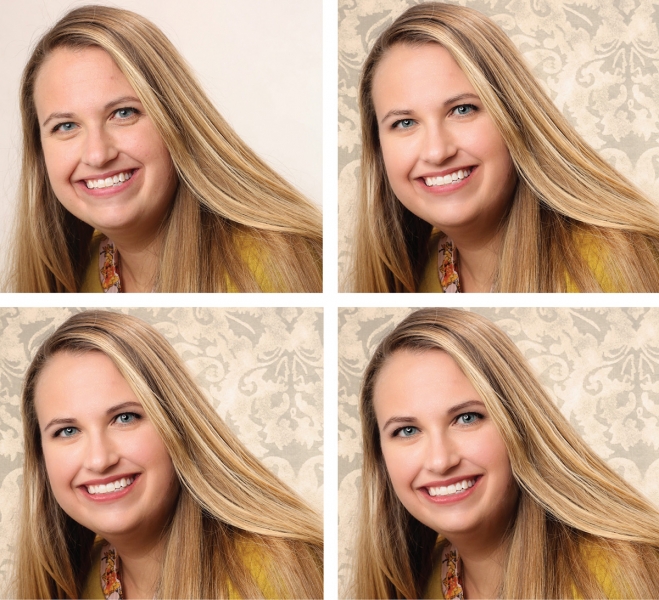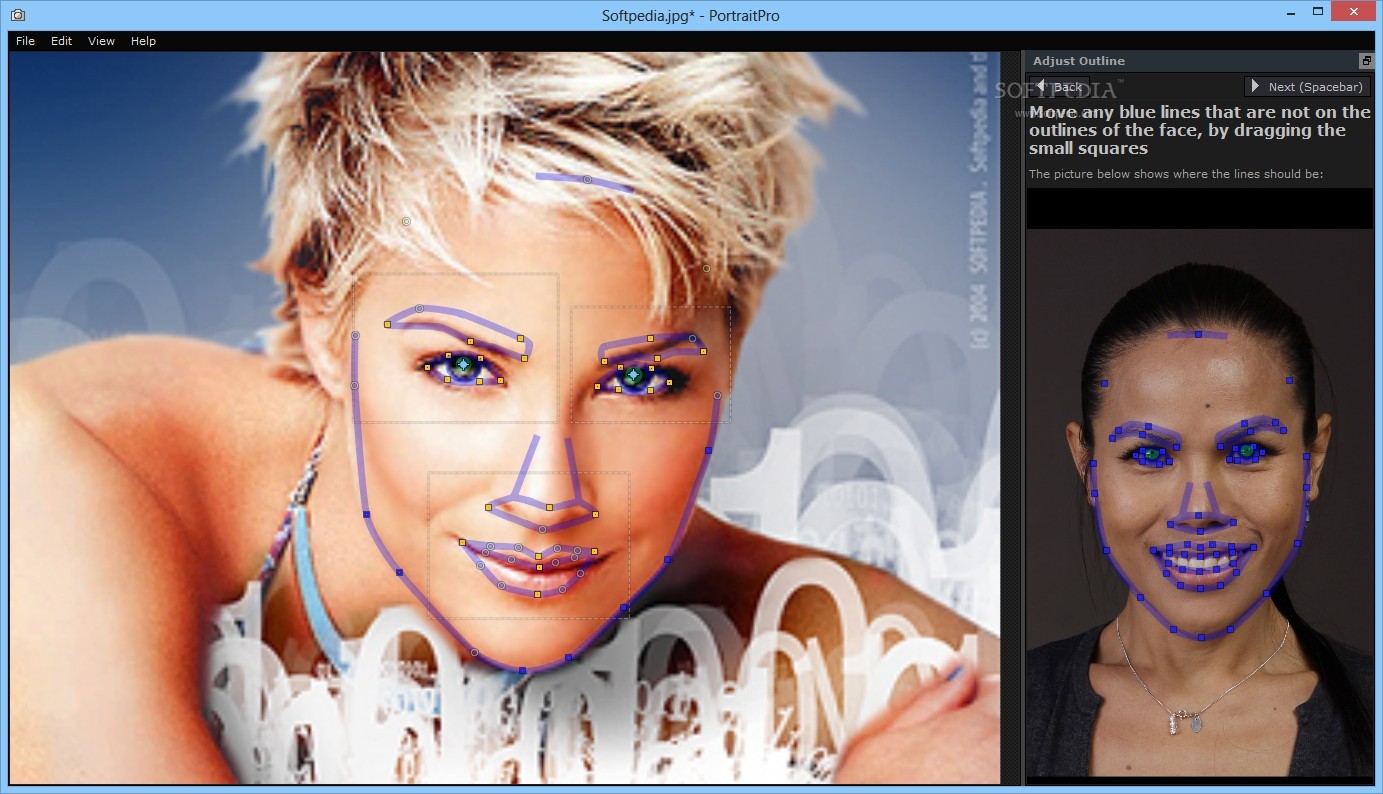While many of us would rather outsource image retouching, it’s an exchange of creative control for greater time efficiency. PortraitPro 18 is an alternative, which is what initially drew me to Anthropic’s PortraitPro Studio Max several years ago when I reviewed version 15. Complete control: check. Improved efficiency: check. The original images shown in this review are straight from the camera, and retouches have been made solely with PortraitPro.

- PortraitPro's plugin in Photoshop Elements As far as program configuration is concerned, Studio Max is capable of overwriting the original files and automatically adding a user-defined suffix to.
- PortraitPro 19 Studio Max Now $139.95. Verified Used 53 Times. SALE PortraitPro 19 Standard Now $44.95. Verified Used 28 Times. 50% Off 50% off + 15% off Portrait Professional Pro Studio. Verified Used 12 Times in the Last Month. See More Offers. Other PortraitPro Promo Codes.
The PortraitPro 18 Studio Max installer prompts you regarding plugins for Adobe Photoshop and Lightroom. For easy access to PortraitPro from those programs, install the plugins. Once installation is complete, you can open PortraitPro directly or via Photoshop (Filter > Anthropics > PortraitPro…). In Lightroom you must set up an additional external editor (Edit > Preferences > External Editing) by navigating to the PortraitPro application file. Then you can right-click any image and access PortraitPro (Edit in > Edit in PortraitPro…).
© Betsy FinnPortraitPro Studio is designed to fit seamlessly into your image processing workflow. A full batch mode allows hundreds of images to be automatically processed in minutes. Use PortraitPro Studio Max as a plugin for Photoshop, Lightroom or Aperture, work directly with RAW files and work with color profiles and images with 16 bits per color.
To see the extent of PortraitPro 18 editing potential, compare the original image (top left) to the one with a background added (top right), makeup added (bottom left), and facial sculpting (bottom right), which is best left for instances where the client requests it.
Upon opening an image, PortraitPro automatically detects faces and attempts to determine age and gender (adult male, adult female, child), but you can override mistakes. On the right side of the screen is a menu toolbar full of sliders and selections—skin lightening, skin masks, eyes, makeup—you name it, PortraitPro pretty much has it covered. There’s even a retouching brush you can use to paint over blemishes that escaped the first round of auto retouching and a restore brush that can remove retouching. Version 18 also allows you to completely mask all edits in an area.
While PortraitPro is good for editing individual images, where it really shines is in batch mode. You can select a folder of images (I use the Windows dialog menu to search for just the TIF files I’ve created in a given folder), and PortraitPro will grind away at recognizing facial features and applying retouching presets to each one. At this point, the extent of PortraitPro’s efficiency is up to you. Either close out the auto batch immediately or tweak individual images as desired.
PortraitPro takes retouching to the next level, or maybe even beyond. The default retouching preset is too heavy-handed for my style, particularly with facial sculpting. Fortunately, there’s an easy fix: custom presets. I created my own preset with a natural, authentic look that matches my own style.
Compared to its predecessor, PortraitPro 18 has faster and more accurate facial recognition (with more draggable points), an improved restore brush, better background masking, options for layers such as a logo or other overlay on top of the image, and more. There are also improvements to hair, skin, and eye controls, including an “open/closed” eyes feature.
My favorite upgrade is the ability to enable non-destructive editing with smart filters in Photoshop (Filter > Convert for Smart Filters). When you run PortraitPro and return to Photoshop, a Smart Filter layer is created that you can toggle off or use to tweak later edits. This is a big improvement over the last version I tested, which required starting from scratch in PortraitPro if you wanted to change your retouching after running the Photoshop plugin.
© Betsy Finn
PortraitPro 18 works extremely well for smoothing skin tone and opening eyes just a bit wider. Compare the original capture (top photo) to the edited version (bottom photo).
I’ll preface my conclusion by saying that I don’t expect anyone to use all the features in this software for everyday retouching. But, should you ever need it, it’s nice to know that PortraitPro has covered all the bases as far as makeup, hair, skin, and backgrounds.
Is there anything PortraitPro can’t do? I encountered one situation where my subject was in profile view with her eyes closed. While the “eyes closed” buttons worked nicely in other situations, I didn’t see an option for “eyes off” in that specific situation.
Beyond that, I have a couple things I’d love to see in future versions: the ability to run a batch edit from a selection of Lightroom images, the ability to export PortraitPro’s background mask to Photoshop, and flexibility in the TIFF file extension. Why the last one? It’s more of a workaround for the lack of batch editing from Lightroom. I’ve been exporting TIF files from Lightroom, batch editing them in PortraitPro, and then renaming the generated TIFF files to TIF so that Lightroom recognizes the edited files. TIF and TIFF are, practically speaking, the same extension. Adobe generates TIF files, PortraitPro uses the newer convention TIFF files.

Overall, PortraitPro is a delight to use, even though my retouching style doesn’t warrant taking full advantage of all its retouching features. If you’re looking to improve your retouching workflow efficiency but don’t want to outsource or worry about losing creative control, give batch mode a shot. It may be a game changer for you.
PortraitPro comes in three versions: Standard ($44.95), Studio ($69.95), and Studio Max ($139.95). The Standard version is limited to JPG and 24-bit TIFF files, lacks batch editing, and does not integrate with editing software. The Studio version lets you work with raw or 48-bit files and has a basic batch dialog. Studio Max has full batch mode for the greatest efficiency. Both Studio and Studio Max integrate with Photoshop, Lightroom, and Aperture. A free trial is available at portraitprofessional.com.
Betsy Finn is a portrait artist in Dexter, Michigan.
Tags: post captureretouchingtechniquePortraitpro Studio Max 21
Related
Quick TakesOn Cloud Nine
Portrait Studio Max

Portraitpro Studio Max Coupon
For Lan Nguyen, daydreaming pays off.
